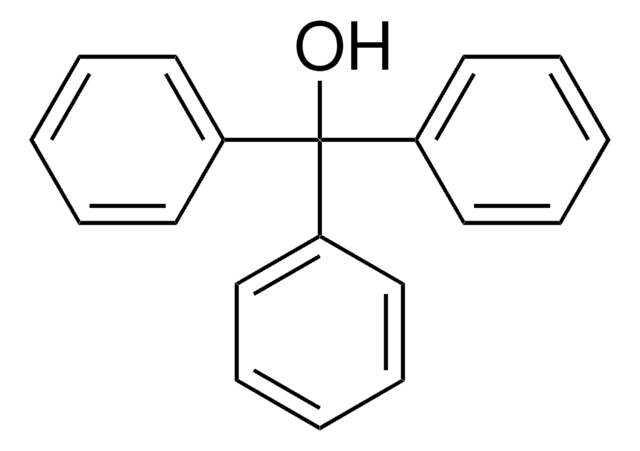650609
Méthanol
≥99.9%, HPLC Plus, suitable for HPLC, poly-coated bottles
Synonyme(s) :
Alcool méthylique
About This Item
97.68 mmHg ( 20 °C)
Produits recommandés
Nom du produit
Méthanol, HPLC Plus, ≥99.9%, poly-coated bottles
Qualité
HPLC Plus
Niveau de qualité
Densité de vapeur
1.11 (vs air)
Pression de vapeur
410 mmHg ( 50 °C)
97.68 mmHg ( 20 °C)
Essai
≥99.9%
Forme
liquid
Température d'inflammation spontanée
725 °F
Limite d'explosivité
36 %
Technique(s)
HPLC: suitable
Impuretés
≤0.0002 meq/g Titr. base
≤0.0003 meq/g Titr. acid
≤0.001% Carbonyl Compounds
≤1.0 ppb Fluorescence (quinine) at 254 nm
≤1.0 ppb Fluorescence (quinine) at 365 nm
<0.05% water
Résidus d'évap.
≤0.0001%
Couleur
APHA: ≤10
Indice de réfraction
n20/D 1.329 (lit.)
pb
64.7 °C (lit.)
Pf
−98 °C (lit.)
Solubilité
benzene: miscible(lit.)
ethanol: miscible(lit.)
water: miscible(lit.)
Densité
0.791 g/mL at 25 °C (lit.)
0.791 g/mL at 25 °C
Gradient HPLC
≤2 mAU at 230 nm
≤5 mAU at 254 nm
λ
H2O reference
Absorption UV
λ: 205 nm Amax: 1.0
λ: 210 nm Amax: 0.80
λ: 220 nm Amax: 0.20
λ: 230 nm Amax: 0.10
λ: 250 nm Amax: 0.02
λ: 400 nm Amax: 0.005
Format
neat
Chaîne SMILES
CO
InChI
1S/CH4O/c1-2/h2H,1H3
Clé InChI
OKKJLVBELUTLKV-UHFFFAOYSA-N
Vous recherchez des produits similaires ? Visite Guide de comparaison des produits
Description générale
Application
- Colony forming unit-fibroblast assay of bone marrow mononuclear cells.
- As solvent for the preparation of extracts of hyphae of Aspergillus for the estimation of gliotoxin by reversed phase-HPLC.
- Immunofluorescence studies.
- To compose eluent for the ion-pair reverse-phase HPLC isolation of nucleotides and their decomposition products.
- As eluent in the HPLC estimation of malondialdehyde in plasma, which is an indicator of oxidative stress.
Notes préparatoires
Mention d'avertissement
Danger
Mentions de danger
Conseils de prudence
Classification des risques
Acute Tox. 3 Dermal - Acute Tox. 3 Inhalation - Acute Tox. 3 Oral - Flam. Liq. 2 - STOT SE 1
Organes cibles
Eyes,Central nervous system
Code de la classe de stockage
3 - Flammable liquids
Classe de danger pour l'eau (WGK)
WGK 2
Point d'éclair (°F)
49.5 °F - closed cup
Point d'éclair (°C)
9.7 °C - closed cup
Équipement de protection individuelle
Eyeshields, Faceshields, Gloves
Faites votre choix parmi les versions les plus récentes :
Déjà en possession de ce produit ?
Retrouvez la documentation relative aux produits que vous avez récemment achetés dans la Bibliothèque de documents.
Les clients ont également consulté
Notre équipe de scientifiques dispose d'une expérience dans tous les secteurs de la recherche, notamment en sciences de la vie, science des matériaux, synthèse chimique, chromatographie, analyse et dans de nombreux autres domaines..
Contacter notre Service technique







